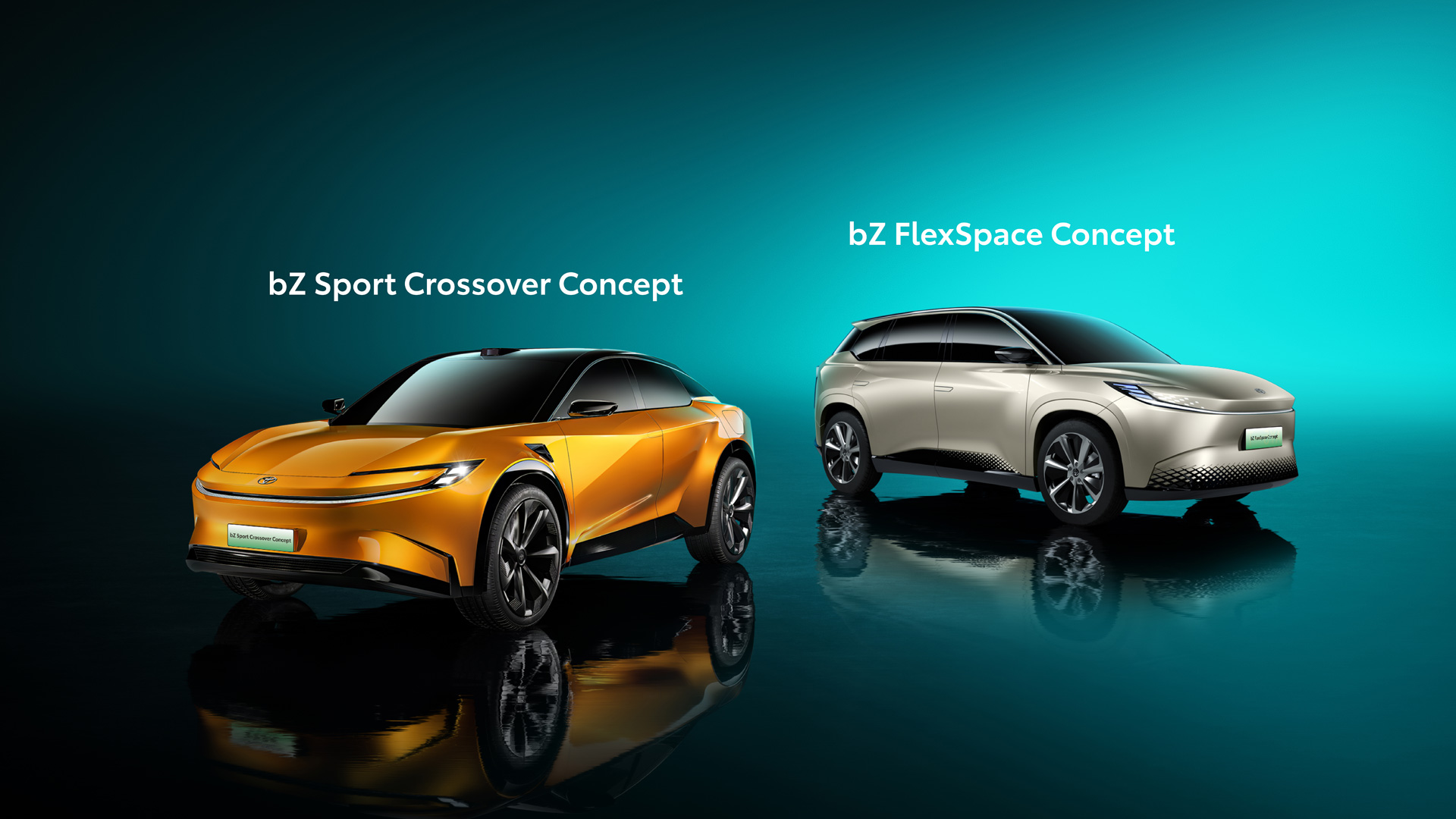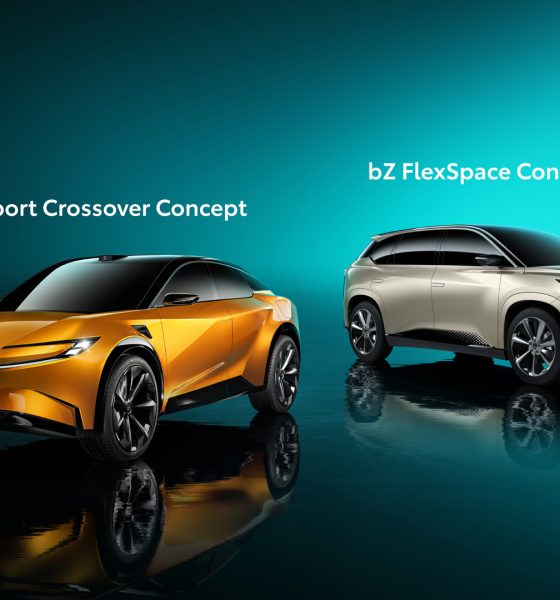Toyota will focus on developing local production and supply chains in China and the United States to boost electric vehicle sales.
The new President and CEO of Toyota Motor Corporation (TMC), Koji Sato, revealed the Japanese automaker’s plans in the electric vehicle market (EVs).
Toyota remained the top-selling automaker in the world for three consecutive years in 2022. However, the rise of battery electric vehicles (BEV) might threaten Toyota’s crown. The Japanese automaker has been a little late in joining the BEV race. This year, though, Toyota appears to have realized the potential of BEVs in the auto industry.
Earlier this month, TMC announced the launch of 10 new BEVs with a target sales goal of 1.5 million units by 2026. Toyota aims for significant growth in the BEV market. It is a smart move, considering that BEVs might be the future of the whole auto industry. Many countries are choosing to phase out internal combustion engine vehicles and support clean, energy-efficient cars.
Part of Toyota’s strategy for growth includes localization in China and the United States.
“In areas where there is an acceleration in the shift towards battery EVs, like China and the US, we need to be bold with local production,” said Toyota’s new CEO in a group interview over the weekend.
China’s Place in the BEV Market
The Chinese auto market is the world’s largest vehicle market, making it a prime target for Toyota’s goals. China is vigorously supporting clean energy vehicles, including BEVs and plug-in hybrids.
Japanese automakers posted the sharpest sales decline in China against foreign brands. The Financial Times attributed Toyota’s sales decline to its slow rollout of BEVs. FAW Toyota and GAC Toyota in China ranked 9th and 10th—respectively—in the China Passenger Car Association’s (CPCA) list of Top 10 Chinese automakers by retail sales. For comparison, Tesla–which only sells BEVs–ranked 7th place.
The CPCA reported Toyota’s 23.5% year-over-year (YoY) decrease in sales in January–including ICE and BEV sales. By February, Toyota reported a decline of 12.2% YoY in sales, with a slight increase of 0.9% year-to-date (YTD). Lastly, in March 2023, Toyota sold 136,400 units in China, down 18.5% YoY. Its sales volume in China by the end of Q1 2023 was 379,900, down by 14.5% YoY.
The US IRA’s Impact on the BEV Market
The United States has also shown full support for battery electric vehicles, specifically with the Inflation Reduction Act (IRA). The IRA provides incentives to support BEV production within the United States or any country with a free trade agreement with the US. It also includes tax credits for BEV purchases.
The IRA has significantly affected the BEV market worldwide since it passed. Many companies outside of the United States have already started working with American companies to build BEV components in the United States. For instance, South Korean battery supplier LG Energy Solutions is working on the construction of battery production facilities in the United States with Ford and Tesla.
Toyota Motor North America (TMNA) reported saw an uptick in electrified vehicle sales in the first quarter. In March, electric vehicles made up 27.5% of TMNA’s total sales volume. TMNA sold a title of 469,558 vehicles in Q1 2023, down by 8.8% by a volume and daily selling rate (DSR) basis. It sold approximately 118,836 elective vehicles, accounting for 25.3% of total sales volume.
“With 22 electrified vehicle options between both the Toyota and Lexus brands, the most among any automaker, we’re giving customers a choice that fits their lifestyle, pocketbook and needs,” said Jack Hollis, TMNA’s executive vice president of sales. “We continue to make improvements to our vehicle inventory to satisfy customer demand, while doing all we can to exceed expectations as we introduce more electrified vehicles throughout the balance of 2023.”
The Teslarati team would appreciate hearing from you. If you have any tips, contact me at maria@teslarati.com or via Twitter @Writer_01001101.

News
Tesla (TSLA) receives “Buy” rating and $551 PT from Canaccord Genuity
He also maintained a “Buy” rating for TSLA stock over the company’s improving long-term outlook, which is driven by autonomy and robotics.

Canaccord Genuity analyst George Gianarikas raised his Tesla (NASDAQ:TSLA) price target from $482 to $551. He also maintained a “Buy” rating for TSLA stock over the company’s improving long-term outlook, which is driven by autonomy and robotics.
The analyst’s updated note
Gianarikas lowered his 4Q25 delivery estimates but pointed to several positive factors in the Tesla story. He noted that EV adoption in emerging markets is gaining pace, and progress in FSD and the Robotaxi rollout in 2026 represent major upside drivers. Further progress in the Optimus program next year could also add more momentum for the electric vehicle maker.
“Overall, yes, 4Q25 delivery expectations are being revised lower. However, the reset in the US EV market is laying the groundwork for a more durable and attractive long-term demand environment.
“At the same time, EV penetration in emerging markets is accelerating, reinforcing Tesla’s potential multi‑year growth runway beyond the US. Global progress in FSD and the anticipated rollout of a larger robotaxi fleet in 2026 are increasingly important components of the Tesla equity story and could provide sentiment tailwinds,” the analyst wrote.
Tesla’s busy 2026
The upcoming year would be a busy one for Tesla, considering the company’s plans and targets. The autonomous two-seat Cybercab has been confirmed to start production sometime in Q2 2026, as per Elon Musk during the 2025 Annual Shareholder Meeting.
Apart from this, Tesla is also expected to unveil the next-generation Roadster on April 1, 2026. Tesla is also expected to start high-volume production of the Tesla Semi in Nevada next year.
Apart from vehicle launches, Tesla has expressed its intentions to significantly ramp the rollout of FSD to several regions worldwide, such as Europe. Plans are also underway to launch more Robotaxi networks in several more key areas across the United States.
News
Waymo sues Santa Monica over order to halt overnight charging sessions
In its complaint, Waymo argued that its self-driving cars’ operations do not constitute a public nuisance, and compliance with the city’s order would cause the company irreparable harm.

Waymo has filed a lawsuit against the City of Santa Monica in Los Angeles County Superior Court, seeking to block an order that requires the company to cease overnight charging at two facilities.
In its complaint, Waymo argued that its self-driving cars’ operations do not constitute a public nuisance, and compliance with the city’s order would cause the company irreparable harm.
Nuisance claims
As noted in a report from the Los Angeles Times, Waymo’s two charging sites at Euclid Street and Broadway have operated for about a year, supporting the company’s growing fleet with round-the-clock activity. Unfortunately, this has also resulted in residents in the area reportedly being unable to sleep due to incessant beeping from self-driving taxis that are moving in and out of the charging stations around the clock.
Frustrated residents have protested against the Waymos by blocking the vehicles’ paths, placing cones, and “stacking” cars to create backups. This has also resulted in multiple calls to the police.
Last month, the city issued an order to Waymo and its charging partner, Voltera, to cease overnight operations at the charging locations, stating that the self-driving vehicles’ activities at night were a public nuisance. A December 15 meeting yielded no agreement on mitigations like software rerouting. Waymo proposed changes, but the city reportedly insisted that nothing would satisfy the irate residents.
“We are disappointed that the City has chosen an adversarial path over a collaborative one. The City’s position has been to insist that no actions taken or proposed by Waymo would satisfy the complaining neighbors and therefore must be deemed insufficient,” a Waymo spokesperson stated.
Waymo pushes back
In its legal complaint, Waymo stated that its “activities at the Broadway Facilities do not constitute a public nuisance.” The company also noted that it “faces imminent and irreparable harm to its operations, employees, and customers” from the city’s order. The suit also stated that the city was fully aware that the Voltera charging sites would be operating around the clock to support Waymo’s self-driving taxis.
The company highlighted over one million trips in Santa Monica since launch, with more than 50,000 rides starting or ending there in November alone. Waymo also criticized the city for adopting a contentious strategy against businesses.
“The City of Santa Monica’s recent actions are inconsistent with its stated goal of attracting investment. At a time when the City faces a serious fiscal crisis, officials are choosing to obstruct properly permitted investment rather than fostering a ‘ready for business’ environment,” Waymo stated.
News
Tesla FSD v14.2.2 is getting rave reviews from drivers
So far, early testers have reported buttery-smooth drives with confident performance, even at night or on twisty roads.

Tesla Full Self-Driving (Supervised) v14.2.2 is receiving positive reviews from owners, with several drivers praising the build’s lack of hesitation during lane changes and its smoother decision-making, among others.
The update, which started rolling out on Monday, also adds features like dynamic arrival pin adjustment. So far, early testers have reported buttery-smooth drives with confident performance, even at night or on twisty roads.
Owners highlight major improvements
Longtime Tesla owner and FSD user @BLKMDL3 shared a detailed 10-hour impression of FSD v14.2.2, noting that the system exhibited “zero lane change hesitation” and “extremely refined” lane choices. He praised Mad Max mode’s performance, stellar parking in locations including ticket dispensers, and impressive canyon runs even in dark conditions.
Fellow FSD user Dan Burkland reported an hour of FSD v14.2.2’s nighttime driving with “zero hesitations” and “buttery smooth” confidence reminiscent of Robotaxi rides in areas such as Austin, Texas. Veteran FSD user Whole Mars Catalog also demonstrated voice navigation via Grok, while Tesla owner Devin Olsen completed a nearly two-hour drive with FSD v14.2.2 in heavy traffic and rain with strong performance.
Closer to unsupervised
FSD has been receiving rave reviews, even from Tesla’s competitors. Xpeng CEO He Xiaopeng, for one, offered fresh praise for FSD v14.2 after visiting Silicon Valley. Following extended test drives of Tesla vehicles running the latest FSD software, He stated that the system has made major strides, reinforcing his view that Tesla’s approach to autonomy is indeed the proper path towards autonomy.
According to He, Tesla’s FSD has evolved from a smooth Level 2 advanced driver assistance system into what he described as a “near-Level 4” experience in terms of capabilities. While acknowledging that areas of improvement are still present, the Xpeng CEO stated that FSD’s current iteration significantly surpasses last year’s capabilities. He also reiterated his belief that Tesla’s strategy of using the same autonomous software and hardware architecture across private vehicles and robotaxis is the right long-term approach, as it would allow users to bypass intermediate autonomy stages and move closer to Level 4 functionality.










